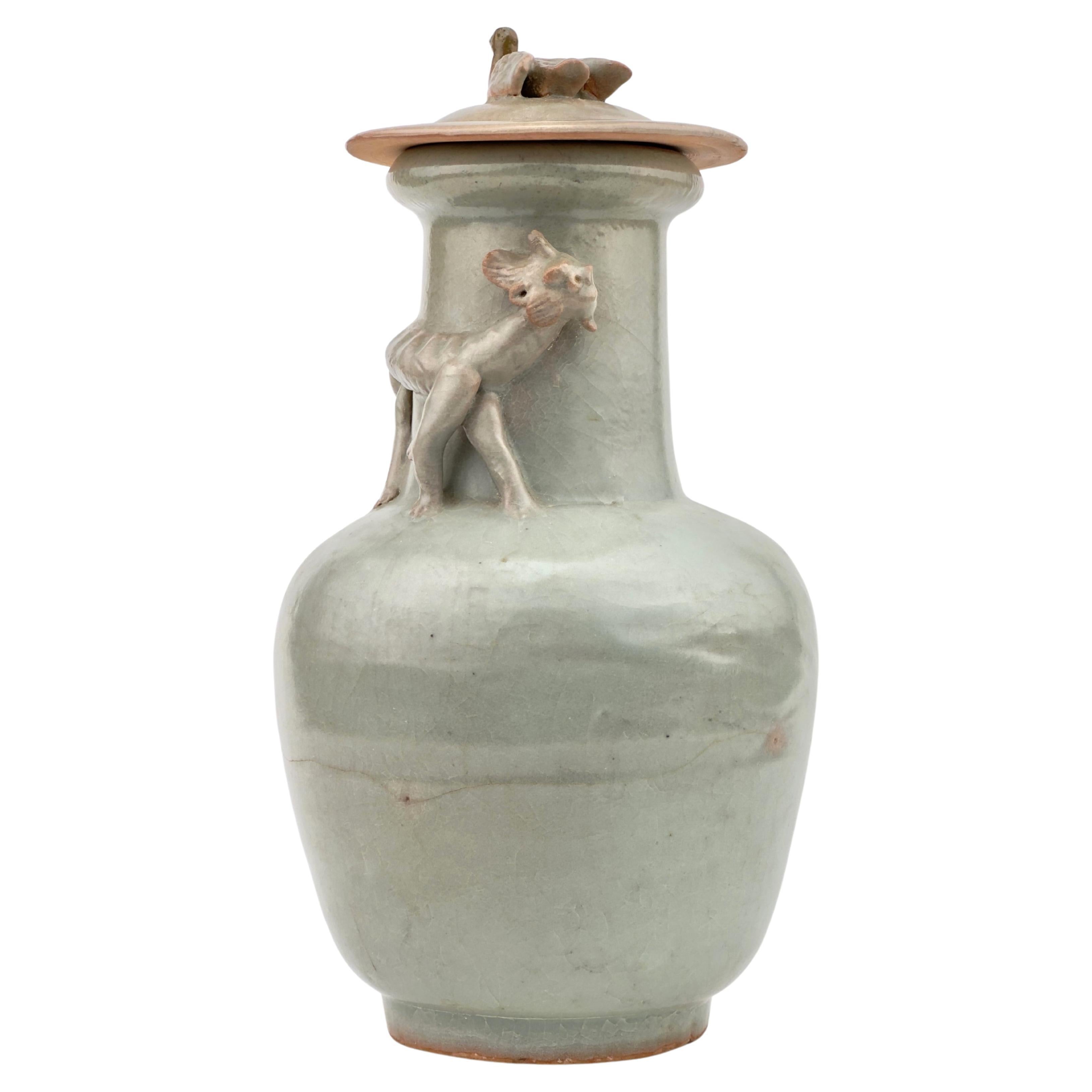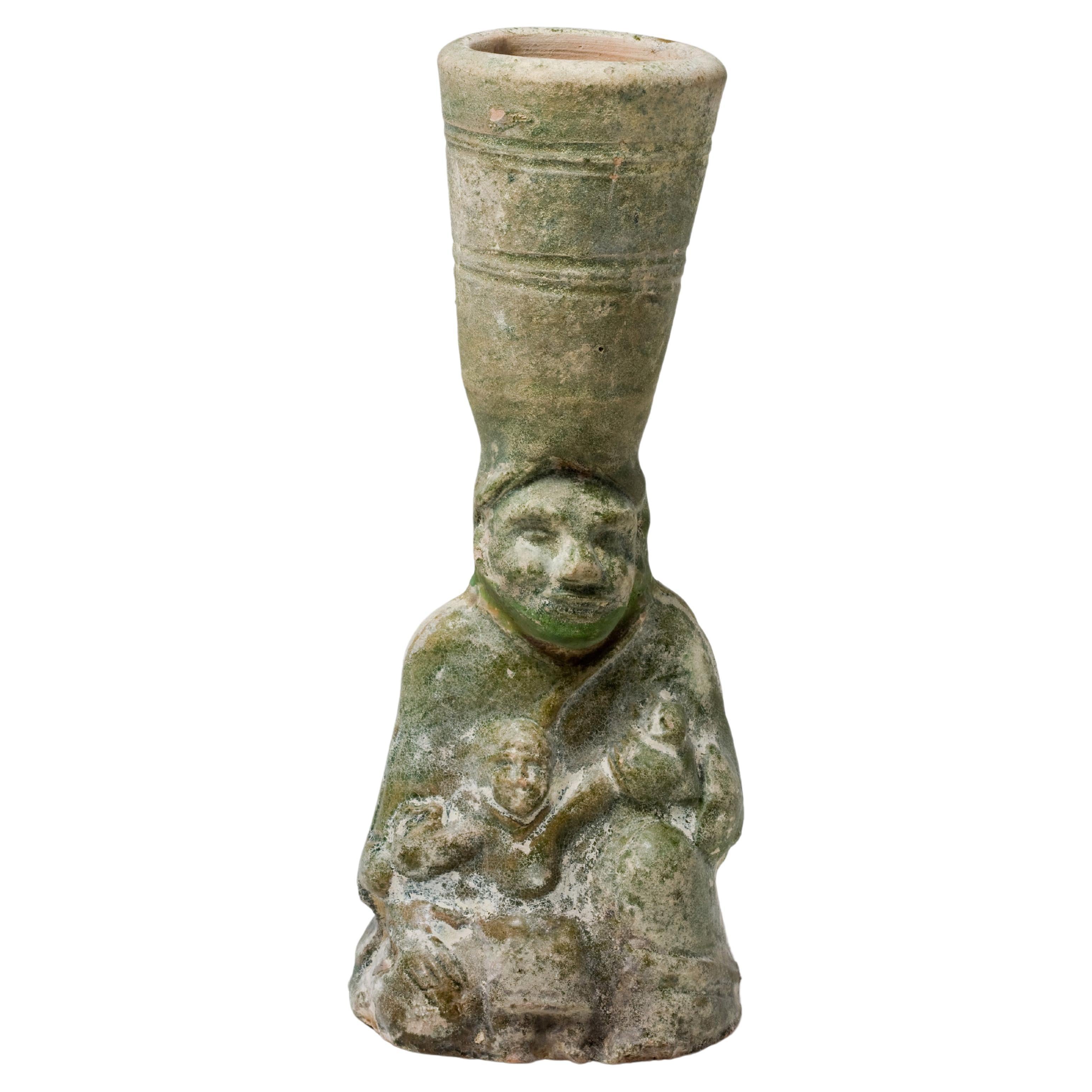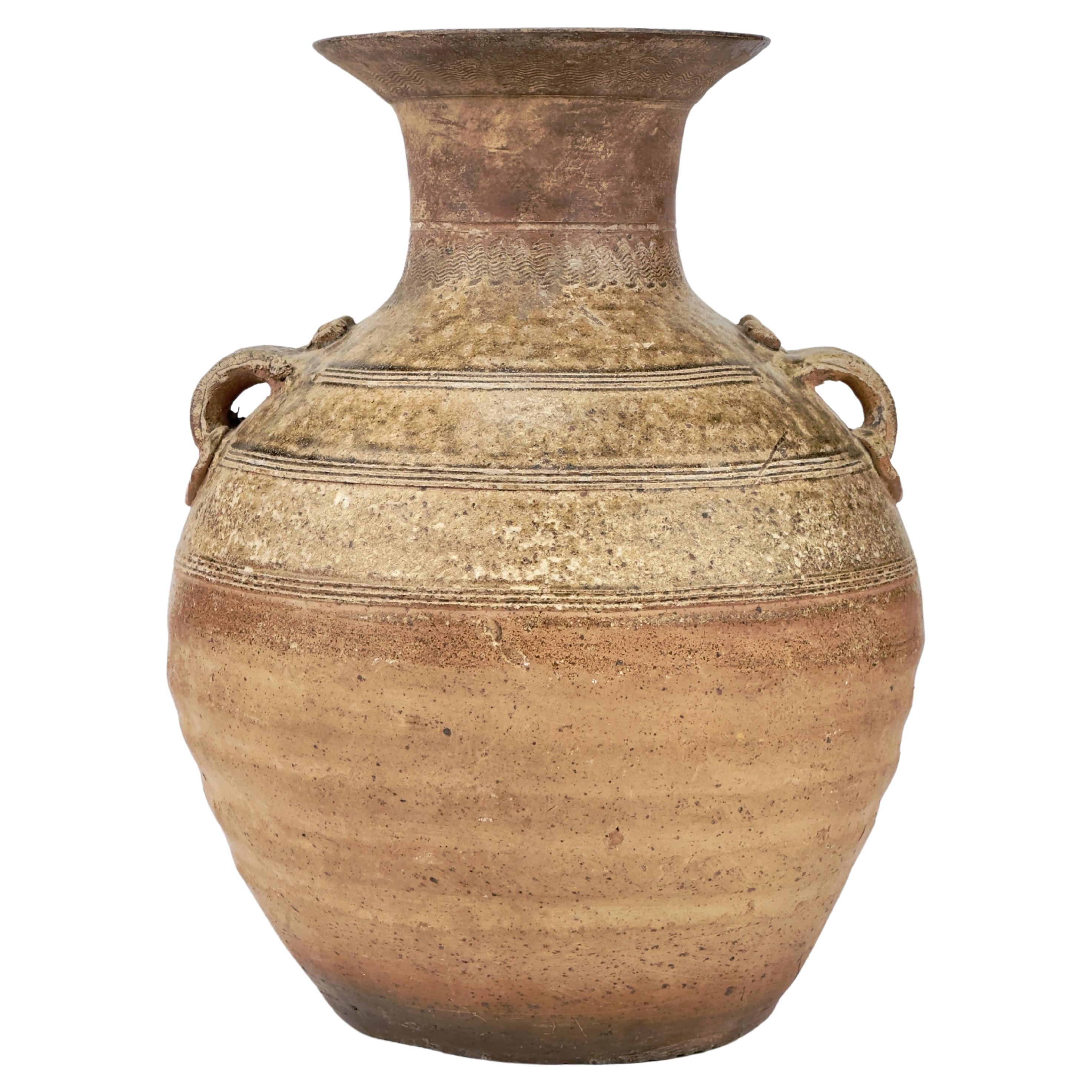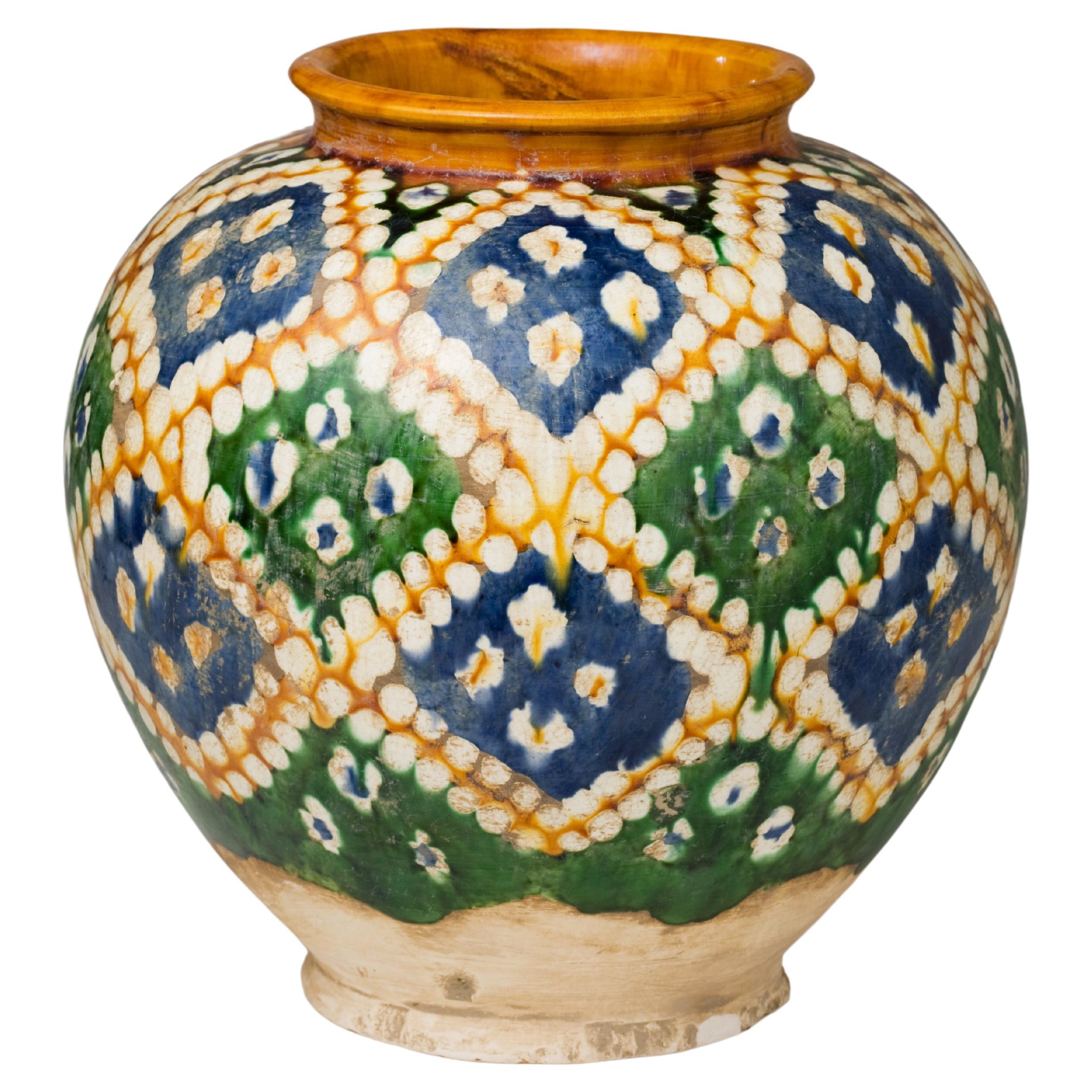Items Similar to Pottery jar, Neolithic period, Majiayao culture
Want more images or videos?
Request additional images or videos from the seller
1 of 14
Pottery jar, Neolithic period, Majiayao culture
About the Item
Large and small two-handled jars, pitchers, bowls, and beakers are the most common forms produced during the Machang phase of the Majiayao (or Gansu Yangshao) culture. The decorative motifs on Machang-period wares are primarily geometric, featuring curvilinear patterns, cross-hatching, and a variety of shapes such as lozenges, triangles, circles, and squares in endless combinations.
Period: Neolithic period, Presumably from Majiayao culture (ca. 3300–2050 BCE)
Medium : Earthenware with pigment
Type : Jar
Provenance : Acquired in late 1990s from Hongkong
Reference :
1) Sotheby's New York 28 March 2023 - CHINA / 5000 YEARS - Lot 970
(Price realised : 3,556 USD / Type : Closely related)
2) Bukowski Auktioner - Autumn Classic Sale 559 - Lot 1392
(Price realised : 1,960 USD / Type : Closely related)
* Neolithic pottery
Neolithic pottery from China, dating approximately between 10,000 BCE to 2,000 BCE, is a significant cultural artifact that reflects the rich culture and advanced technology of the region during this era. The pottery found across various regions of China displays unique styles and techniques, indicating a diverse and sophisticated cultural landscape.
During the Neolithic period, pottery in China was predominantly used for agricultural purposes, including storage containers, cooking vessels, and dining utensils. It was common for Neolithic Chinese cultures to decorate pottery with intricate patterns or colors, often reflecting the religious beliefs or life philosophies of the time. For instance, pottery from the Hemudu culture in the Yangtze River basin is known for its black and red patterns, while the Yangshao culture in the Yellow River basin is characterized by its fine linear designs.
The shapes and sizes of Neolithic Chinese pottery varied greatly, influenced by the climate, geography, and natural resources of each region. Some areas prioritized large and heavy storage containers, while others required smaller and more portable bowls for convenience.
Archaeological excavations of this pottery have been crucial in understanding the transition to settled life, the advancement of agricultural techniques, and the complexity of early societies in China. The production techniques and stylistic decorations of the pottery evolved over time, and these variations provide invaluable data for studying the development and cultural exchanges of ancient Chinese societies.
- Dimensions:Height: 11.82 in (30 cm)Diameter: 4.73 in (12 cm)
- Materials and Techniques:
- Place of Origin:
- Period:
- Date of Manufacture:3300–2050 BCE
- Condition:Minor losses. chip on mouth.
- Seller Location:seoul, KR
- Reference Number:1stDibs: LU9577239783132
About the Seller
New to 1stDibs
Joined in the past six months.
4.5
Vetted Seller
These experienced sellers undergo a comprehensive evaluation by our team of in-house experts.
Established in 1999
1stDibs seller since 2023
Typical response time: <1 hour
- ShippingRetrieving quote...Ships From: seoul, Korea South
- Return PolicyA return for this item may be initiated within 10 days of delivery.
Auctions on 1stDibs
Our timed auctions are an opportunity to bid on extraordinary design. We do not charge a Buyer's Premium and shipping is facilitated by 1stDibs and/or the seller. Plus, all auction purchases are covered by our comprehensive Buyer Protection. Learn More
More From This SellerView All
- Neolithic Yangshao Culture Pottery Amphora, 3rd-2nd Millenium BCLocated in seoul, KRThis pottery has a bulbous body with two small, protruding handles near its widest part. The pottery features horizontal bands of patterns, which include a sequence of geometric shap...Category
Antique 15th Century and Earlier Chinese Antiquities
MaterialsPottery
- A Rare Sancai-Glazed Pottery Jar, Tang DynastyLocated in seoul, KRThe jar is of globular shape and is decorated to the body with a geometric design band of lozenge-shaped motifs in blue, green, ochre and cream below a plain ochre everted mouth rim,...Category
Antique 15th Century and Earlier Chinese Tang Antiquities
MaterialsEarthenware
- Sancai-Glazed Pottery Tripod Jar, Tang DynastyLocated in seoul, KRThe globular body is supported on three claw feet and is covered in a splashed-glaze of amber, green and cream color, which stops short of the unglazed base. Date : Tang Dynasty(61...Category
Antique 15th Century and Earlier Chinese Tang Antiquities
MaterialsEarthenware
- Green-glazed pottery tripod 'hill' jar, Han Dynasty, 206 BC - 220 ADLocated in seoul, KRThe modelled animal figures and landscapes of this piece represent the Daoist ideology of the Han dynasty. The mountain-shaped lid refers to the sacred dwellings of the immortals, th...Category
Antique 15th Century and Earlier Chinese Han Antiquities
MaterialsStoneware
- Jar with Painted Decoration of "Frog" Pattern, Neolithic PeriodLocated in seoul, KRLarge and small two-handled jars, pitchers, bowls, and beakers are the most common forms produced during the Machang phase of the Majiayao (or Gansu Yangshao) culture. The decorative...Category
Antique 15th Century and Earlier Chinese Jars
MaterialsPottery
- Cizhou Lotus Carved Jar, Song-Yuan dynastyLocated in seoul, KRThis jar features a carved design, which is typical of Cizhou ware. It has a creamy white and brown color scheme, and the prominent decoration of lotus flower, which is a common motif in Chinese art and culture, symbolizing purity and enlightenment. The carving technique involves coating the vessel with a layer of white slip (liquid clay), then carving away parts of it to create the design, revealing the darker clay body beneath. This technique allows for a strong contrast between the background and the carved motif. Period : Song-Yuan Dynasty Type : Jar Medium : Cizhou Ware Size : 21.5 cm(Height), 11cm(Mouth Diameter) Provenance : Acquired in 1999, Hongkong * Cizhou Ware Cizhou is the name given to a number of stonewares, grey or buff, of varying degrees of hardness, with painted, incised or carved decoration on a clay slip. These stonewares were not only made in the region of Cizhou, Hebei Province, but in several provinces of China during the Song, Yuan and Ming periods. The great centres of production were in the north of China in the provinces of Hebei, Henan and Shanxi. Cizhou wares seem to have been very popular, made for a clientèle of rich merchants, at a period when the paintings of famous...Category
Antique 15th Century and Earlier Chinese Ming Antiquities
MaterialsPottery
You May Also Like
- Antique Chinese Neolithic Siwa Culture Pottery Amphora JarLocated in Sampantawong, THAntique Chinese Neolithic Siwa culture pottery Amphora jar. Age: China, Neolithic period, 1350 B.C. Size: Height 15.6 C.M. / Width 13.3 C.M. Condition: We...Category
Antique 15th Century and Earlier Chinese Antiquities
MaterialsPottery
- Antique Chinese Neolithic Siwa Culture Pottery Amphora JarLocated in Sampantawong, THAntique Chinese Neolithic Siwa culture pottery Amphora jar. Age: China, Neolithic period, 1350 B.C. Size: Height 17.8 C.M. / Width 21 C.M. Condition: ...Category
Antique 15th Century and Earlier Chinese Antiquities
MaterialsPottery
- Antique Chinese Neolithic Siwa Culture Pottery Amphora JarLocated in Sampantawong, THAntique Chinese Neolithic Siwa culture pottery Amphora jar. Age: China, Neolithic period, 1350 B.C. Size: Height 20.2 cm. / Width 24.3 cm Condition: Well-preserved old burial co...Category
Antique 15th Century and Earlier Chinese Antiquities
MaterialsPottery
- Antique Chinese Neolithic Siwa Culture Large Pottery Amphora JarLocated in Sampantawong, THAntique Chinese Neolithic Siwa culture large pottery Amphora jar. Age: China, Neolithic period, 1350 B.C. Size: Height 33 C.M. / Width 26.2 C.M. Condi...Category
Antique 15th Century and Earlier Chinese Antiquities
MaterialsPottery
- Large Chinese Neolithic Period Banshan Painted Clay Pottery Handled Water Jar HuLocated in Forney, TXA rare Chinese Neolithic period Majiayao culture / possibly late Yangshao culture, Banshan type, Gansu Province, Northern China, 3rd-2nd Millennium B.C., large earthenware water jar ...Category
Antique 15th Century and Earlier Chinese Primitive Antiquities
MaterialsClay
- Chinese Neolithic Qijia Culture Red Pottery Vessel, 2200 BC - 1600 BC, ChinaLocated in Austin, TXA sublime Chinese neolithic burnished red pottery jug, Qijia Culture (2200 BC - 1600 BC), modern day Gansu Province, China. The simple jug of alluring form, with a voluptuous body, short, narrow neck with slightly everted mouth, and a single ear handle. The red pottery of gorgeous shades of terracotta, and slightly burnished. Overall surprisingly contemporary for a piece over three thousand years old. The Qijia Culture was a late Neolithic...Category
Antique 15th Century and Earlier Chinese Ceramics
MaterialsPottery
Recently Viewed
View AllMore Ways To Browse
Fine Art Pottery
Patterned Art Pottery
Sothebys Antique
Storage Container
Antique Exchange
York Pottery
Types Of Antique Pottery
Antique Red Pottery
Asian Antique Jars
Antique Pottery Jar
Geometric Design Pottery
Antique Triangle
Agriculture Antique
Antique Agricultural
Ca Pottery
Asian Artifacts
Antique Portable
Antique Asian Furniture New York





